Car-free Lüneburg Heath nature reserve
The first Nature Park in Germany and one of the largest of its kind
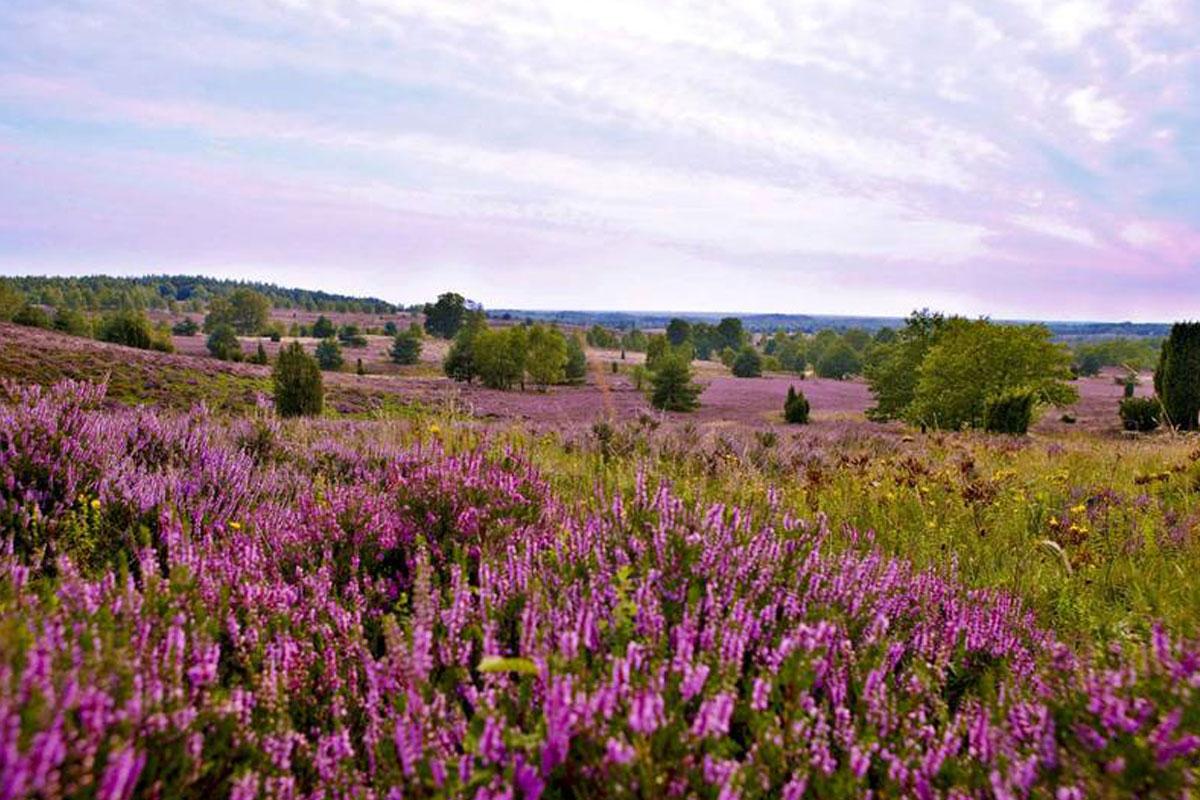
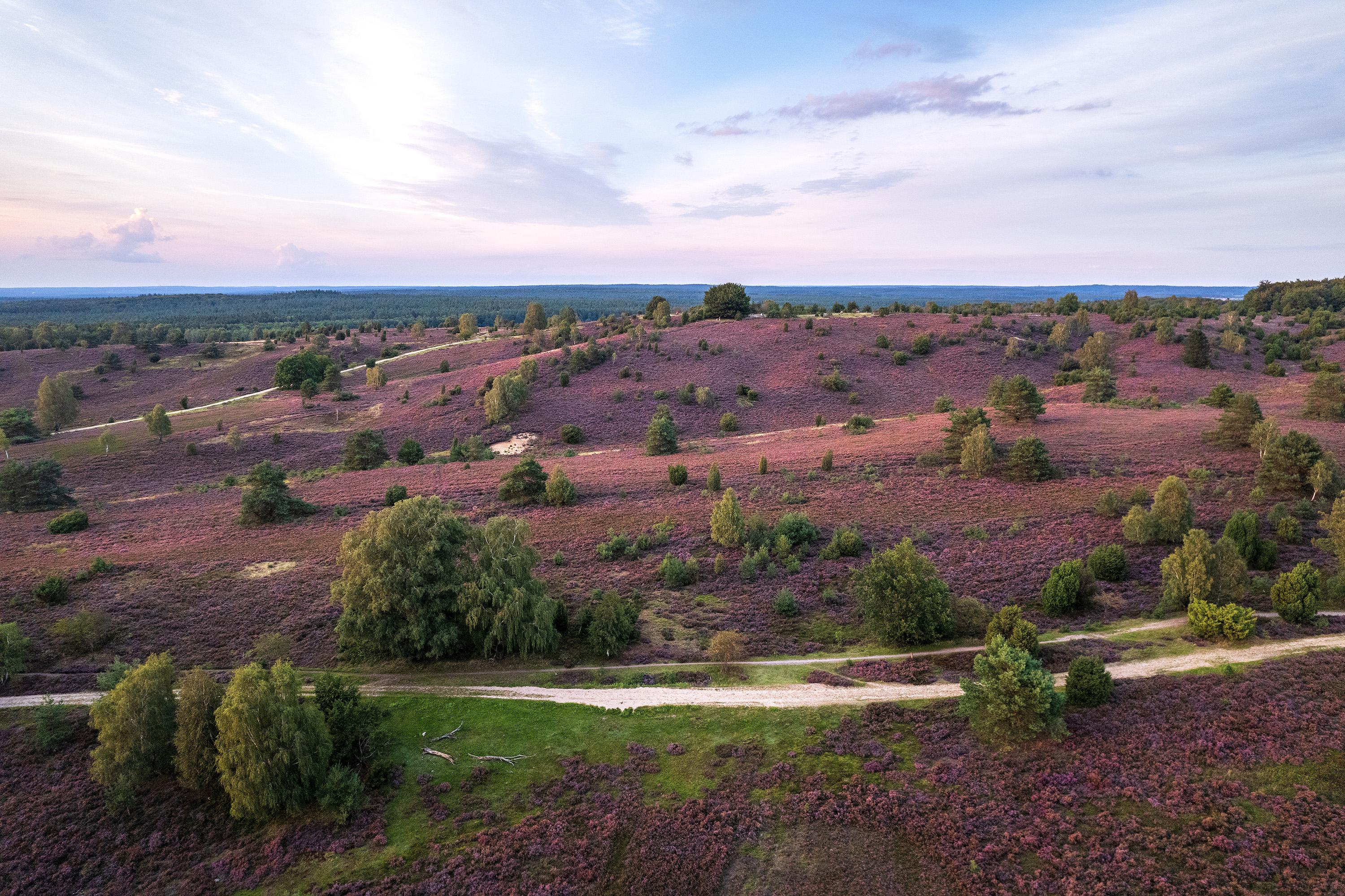
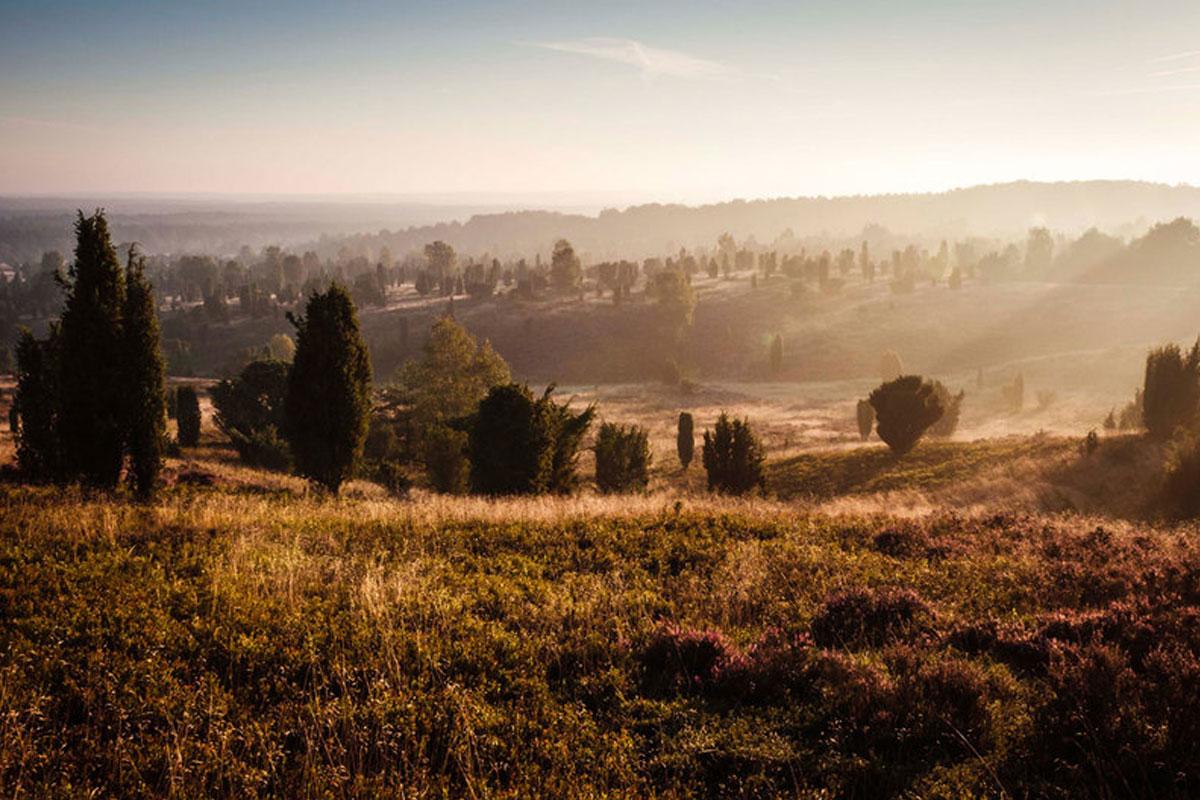
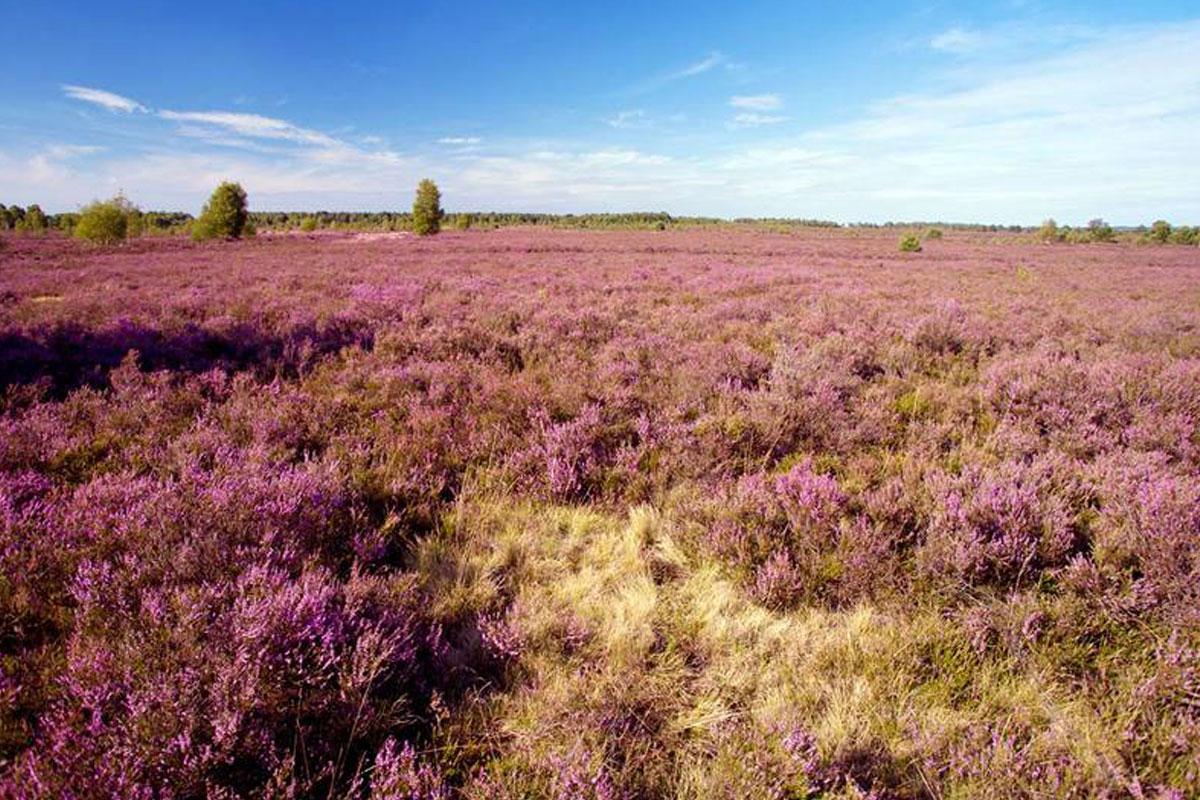
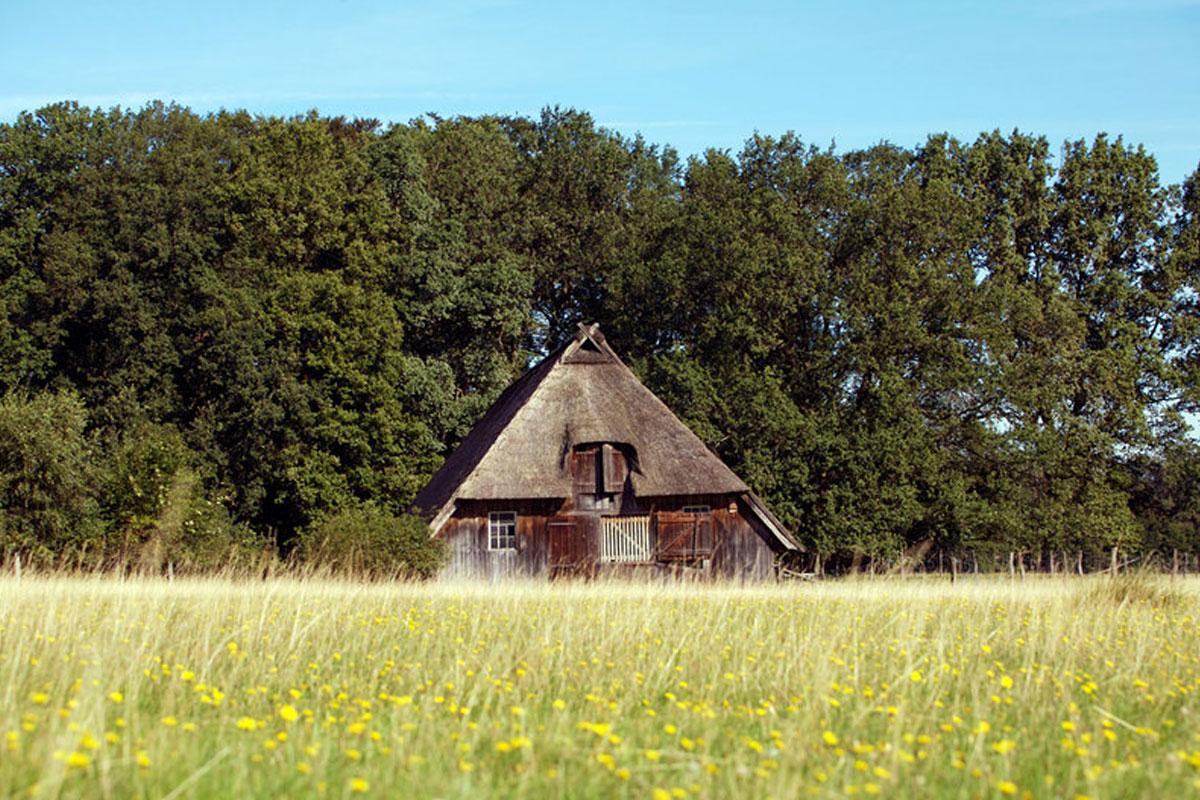
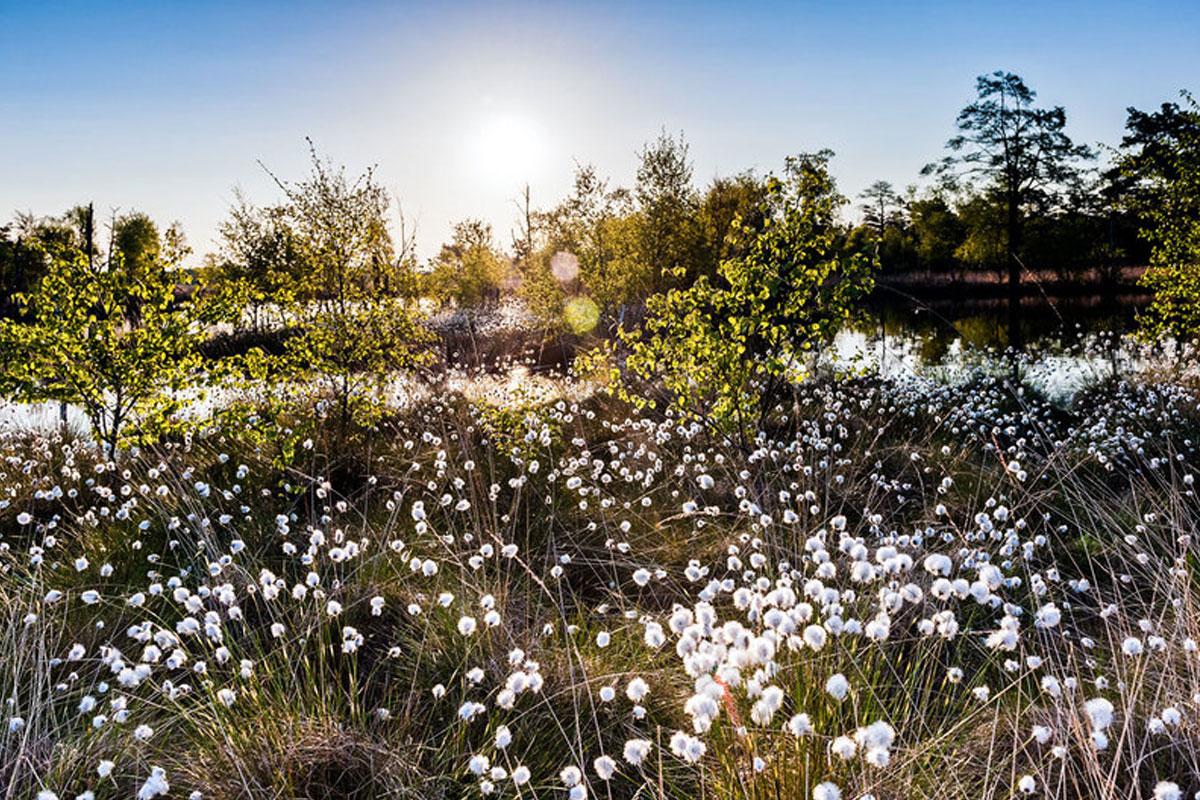
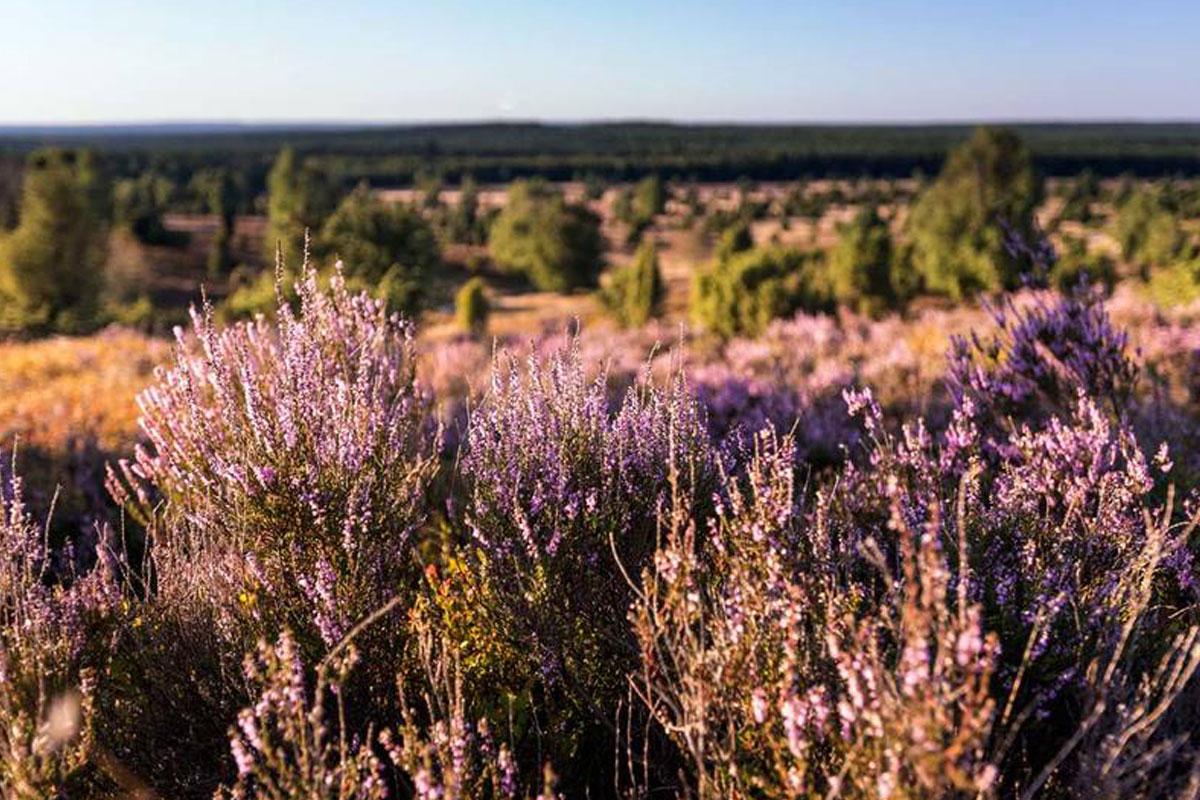
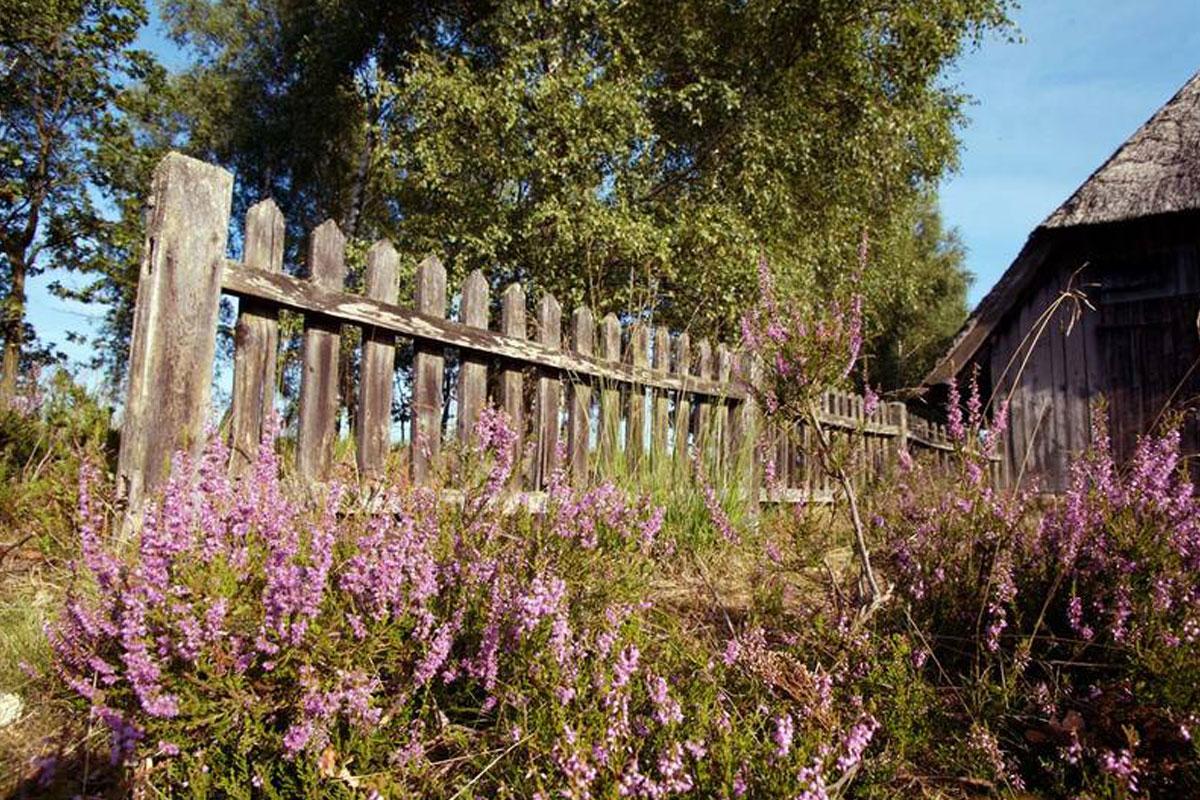
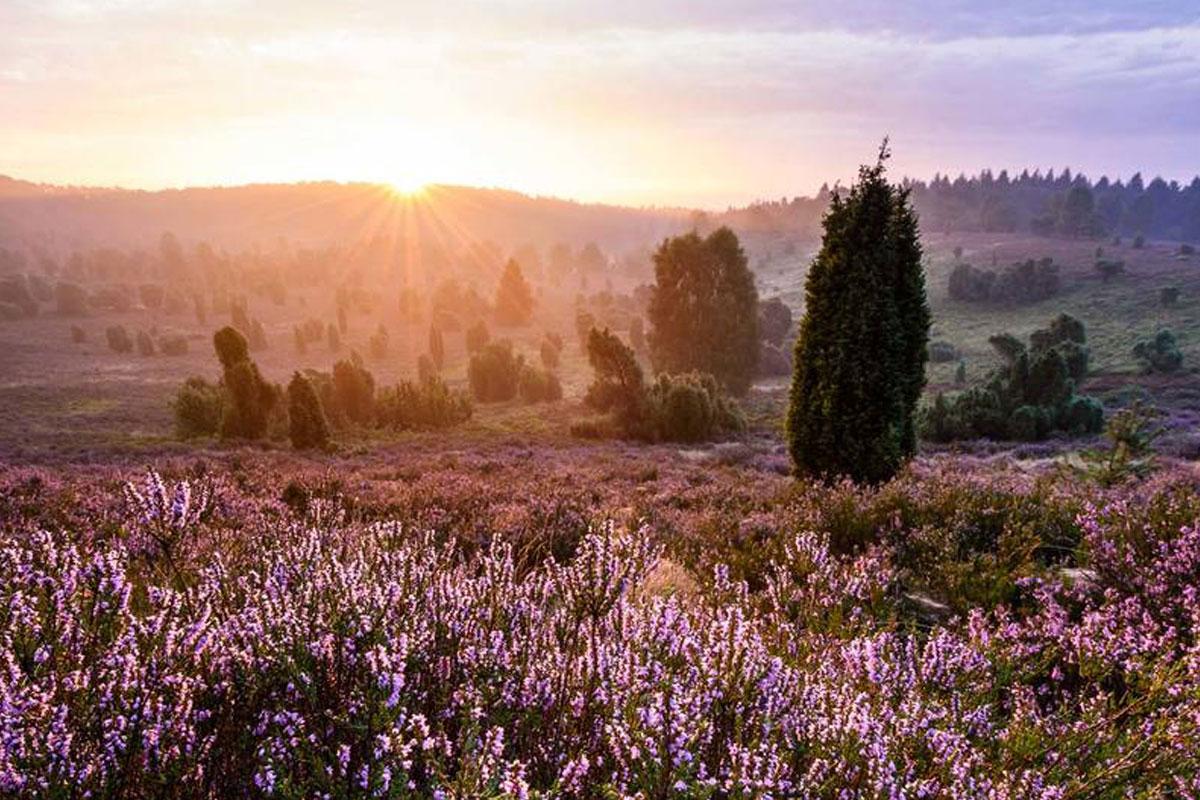
Lüneburg Heath Nature Park extends in the north of Lüneburg Heath, from Buchholz i.d. Nordheide to Soltau in the south, from Schneverdingen in the west to the borders of the Hanseatic city of Lüneburg in the east.
What is a nature park?
Nature parks are large-scale landscapes that predominantly consist of landscape and nature protection areas and are subject to protection under nature conservation law. Nature parks combine the protection and use of nature and landscape. They strive for a balance between an intact countryside, economic well-being, and a high quality of life, making them particularly suitable for recreation and experiencing nature.
Lüneburg Heath Nature Park - Germany's first nature park!
Lüneburg Heath Nature Park was the first nature park in Germany and, at 107,000 hectares, is one of the largest nature parks of its kind. The heart of the Park is the 23,440 hectare Lueneburg Heath Nature Reserve, which is car-free except for a few access roads, and where the largest contiguous heathland in Central Europe is located. But it is not just the heathland that gives the Lüneburg Heath Nature Park a special charm. Mystic wetlands, fragrant deciduous forests, crystal-clear heath streams, shallow flowing heathland rivers, as well as the living heath villages with their old thatched houses and courtyards are worthy of protection and make Lüneburg Heath Nature Park a multi-faceted place.
Formed by the Ice Age and shaped by humans
The cultural landscape of Lüneburg Heath Nature Park has been created over the centuries through the influence of man and today it provides a habitat for many rare plant and animal species.
Today's heath landscape of Lüneburg Heath, which is one of the most popular destinations in the Nature Park, has a long process of development behind it. Numerous natural and human influences have played a role here. Today's surface structure was shaped by the ice ages. When man became sedentary from the Neolithic Age and started farming, he made sure that the hitherto widespread forest was pushed back and heathland was created. But only thanks to an early conservation effort at the beginning of the 20th century could this be preserved as Lüneburg Heath Nature Park.
Late summer - heather blossom time
During the heather blossom in August and September, you can admire a purple carpet of flowers in many places in the Nature Park, only briefly interrupted by the rich green junipers or silver birches. In the warm summer wind, the heathland bees hum and over the whole region lies an incomparable magic. The largest contiguous heathlands are located in the car-free Lüneburg Heath Nature Reserve around Wilseder Berg which, at 169 metres, is the highest point in the northwest German lowlands.
But the heathlands around Amelinghausen, Handeloh, and Schneverdingen are also worth a visit.
Lüneburg Heath Nature Park has a large network of footpaths, many designated equestrian trails, the largest contiguous Nordic walking network in northern Germany, and a dense network of cycle paths.
Heidschnucken - our animal landscape managers
The well-known Heidschnucken sheep are used for heathland management. The grazing of heathland by Heidschnucken is probably the best-known method of heathland management. The Heidschnucken bite young trees and thus prevent birch and pine from spreading across the heathland. A total of ten herds wander around Lüneburg Heath Nature Park for 365 days a year. In addition, the heather must also be maintained mechanically or by controlled burning. All this serves to preserve this unique landscape and always takes place in winter. Heidschnucken meat is a regional delicacy and can be tasted in almost all Lüneburg Heath restaurants.
Rare animals and plants
On your walk or bike ride through Lüneburg Heath Nature Park, you may be lucky enough to see many rare animals and plants. From the paths you can see and hear rare bird species such as the woodlark, whinchat, stonechat, red-backed shrike, great grey shrike, nightjar, and black grouse. On the paths, small tiger beetles scurry about or sand lizards bask in the sun. The diversity of the landscape also explains the occurrence of a large number of rare plant species, such as the bog asphodel, marsh gentian, maiden pink, or cross-leaved heath.
Car-free Lüneburg Heath Nature Reserve - the heart of the Nature Park
In the heart of Lüneburg Heath Nature Park lies the 23,400-hectare Lüneburg Heath Nature Reserve. Here are not only the largest contiguous heaths of Central Europe, but also one of the largest contiguous forest areas in Lower Saxony, as well as extensive wetlands, meadows, and fields.
Here you walk on the sandy heath (good for your joints) through the pristine heathland and hear only the sounds of nature. The flora and fauna is special; for example, in the Lüneburg Heath we find the shy black grouse.
In the middle of Lüneburg Heath Nature Reserve there is the tourist town of Wilsede, which can also be reached by carriage. Park your car at the edge of the Reserve and use our well signposted trails.
Directions to Lüneburg Heath Nature Reserve:
If you are planning a trip to the heathlands, we recommend that you drive to the car parks in Niederhaverbeck and Oberhaverbeck. Further north, the visitor car parks in Undeloh and Döhle are also the starting points for tours of the Heath. Heath carriages also start here. Trained quality coachmen guide you through the heathland with its charming views, and they always have an anecdote or two for you.
Another option for exploring the area is provided by the numerous cycle paths and footpaths that lead from the places mentioned to the Nature Reserve. In some places or hotels you can rent bicycles.
Excursion destinations in Lüneburg Heath Nature Park:
In the heath village of Wilsede, which lies in the midst of Lüneburg Heath Nature Reserve and which you can reach only on foot, by bicycle or by coach, you can visit "Dat ole Huus" Heath Museum, which was transferred here in 1907. It is one of the oldest open-air museums in Germany and presents the life and work of our ancestors from around 1900.
Only 1.9 kilometres away from Wilsede lies the "Totengrund". The Totengrund is one of the most beautiful and most famous valleys in Lüneburg Heath.
The 169 metre high Wilseder Berg is only 1.9 kilometres away from Wilsede. It is the highest part of the northwest German lowlands. From the summit of the hill the heathland is literally at your feet.
In Undeloh, there is the Heide Experience Centre with modern media offering you an insight into the origins of the heathland.
At the gates of the town of Schneverdingen, the heather blossom on Osterheide captivates people every year. Not far away is the 8,000-year-old Pietzmoor, which offers a fascinating natural spectacle at any time of the year or day.
For art and culture lovers, the Bossard Site of Arts offers a special treat. With the Site of Arts, the artist couple Bossard have created a unique symbiosis of architecture, sculpture, painting, arts and crafts, and garden art.
Art also awaits you in the small Heath village of Neuenkirchen. At the Springhornhof, 39 outdoor installations created by artists provide a cross-section of local and landscape-related art.
How you live and move with bare feet can be experienced in Lüneburg Heath Barefoot Park in Egestorf. 14 acres includes the terrain where your bare feet come into contact with nature.
Actively experience Lüneburg Heath Nature Park!
Lüneburg Heath Nature Park has a large footpath network. The Nature Park also has much to offer for cyclists. Since the bike paths are not all asphalted (for the protection of nature), we recommend a robust touring bike for your bike trips. But you can explore Lüneburg Heath Nature Park not only on land, but also from the water.
Hiking trails
The following signposted hiking trails lead you through Lüneburg Heath Nature Park:
- Heidschnucken Quality Trail
- Heathland Puzzle
- Pastor Bode Trail
- Cultural Foundlings
- Parcours of Magical Moments
- Purple Coronation
Cycle paths
- Through heathland and water
- Heathland art tour
- Heathland experience tour
- Seeve cycle path
- Leine Heath cycle path
- Luhe cycle path
Canoeing
Change of perspective! If you love sport, then a canoe trip on the Heath rivers is guaranteed to be the right thing for you.
- Seeve river
- Luhe river
Natural wonders and viewpoints in Lüneburg Heath Nature Park
A special insight into the many different facets of Lüneburg Heath Nature Park is given by natural wonders and viewpoints. These are over 40 locations which impress with a particularly attractive view or as a stand-alone natural phenomenon. And there are a lot of them in Lüneburg Heath Nature Park, including many insider tips!
This is also due to the large structural diversity of Lüneburg Heath Nature Park. In addition to extensive heathland and forest areas you will also find wetlands, meadows, rivers, and many other surprises. And then, of course, there are also the peculiarities of the lowlands with the vastness and the sometimes unique cloudscapes, fog, and light moods.